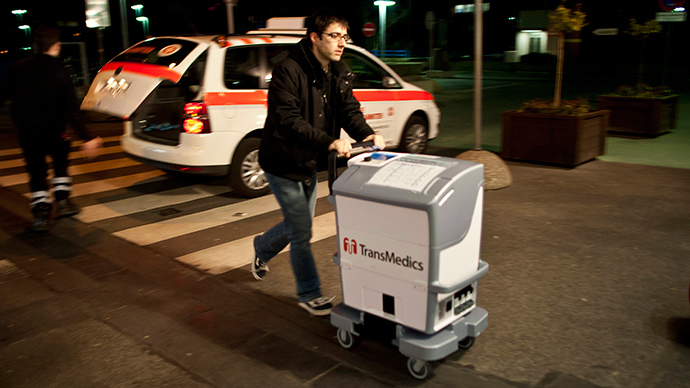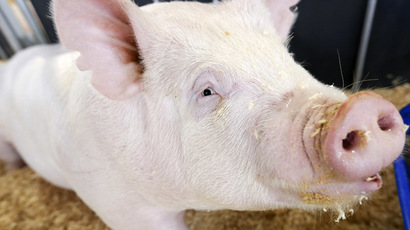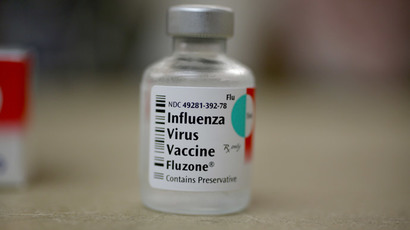‘Supercool’ organs preserved 3 times longer for transplants

A new "supercooling" system found to preserve rat livers for up to four days – three times longer than before – could revolutionize the system of organ donation and save hundreds of lives each year.
Keeping organs healthy for longer than 24 hours has so far proven difficult for scientists. Organs begin to deteriorate once they are cut off from oxygen and nutrients, while the process of freezing irreparably damages tissue.
But investigators at the Massachusetts General Hospital (MGH) Center for Engineering in Medicine’s new method, which involves cooling the livers while flushing them with oxygen and nutrients and preserving them in a solution containing a form of antifreeze, could make short organ shelf time a thing of the past.
Since the 1980s, donor organs have been preserved at temperatures at or just above freezing in a solution developed at the University of Wisconsin, which reduces metabolism and organ deterioration for up to 12 hours.

In total, livers being treated with this technology can live outside the body for a maximum of 24 hours. But with the latest methods, that period can be expanded by a matter of days using a three-pronged technique.
First, the livers were removed from donor rats, where they were then attached to a machine perfusion system - what researchers described as an 'artificial body' that supports basic organ function. The livers were then loaded with a glucose derivative called 3-OMG, which is taken into liver cells, after which they were flushed with a combination of the University of Wisconsin (UW) solution and polyethylene glycol (PEG), which protects cell membranes. All the while, they are being cooled to 4˚C (40˚ F). Next, the livers were submerged in a UW/PEG solution and stored at -6˚C (21˚F) for either 72 or 96 hours, after which the temperature was gradually increased back to 4˚C.
All the animals that received organs, supercooled for 72 hours, were healthy at the end of the three-month study follow-up period, said study results published in the journal Nature Medicine.
While only 58 percent of animals which received organs supercooled for 96 hours survived for three months, scientists are analyzing several factors which occurred during the rewarming process that could help isolate the different between the successful and unsuccessful transplants.
"To our knowledge, this is the longest preservation time with subsequent successful transplantation achieved to date," Korkut Uygun, co-senior author of the report, said in a press release. "If we can do this with human organs, we could share organs globally, helping to alleviate the worldwide organ shortage."
The technique, of course, cannot yet be applied to human patients, though researchers are already looking ahead to bigger test subjects.
“The next step will be to conduct similar studies in larger animals," said Rosemarie Hunziker, from the National Institute of Biomedical Imaging and Bioengineering, in a news release. "It is exciting to see such an achievement in small animals, by recombining and optimizing existing technology. The main point here is that using all of these approaches at once was what led to success."














